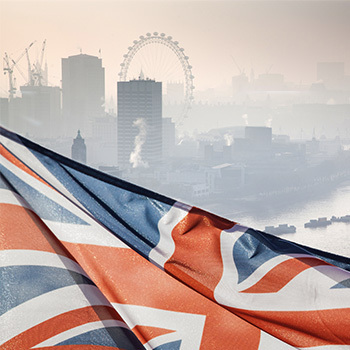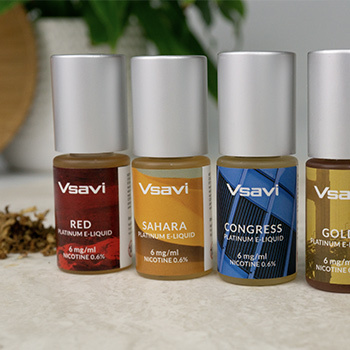Understanding UK Vaping Laws and Regulations
21st Jun 2023
 The United Kingdom is one of the most vape-friendly nations in the world. Our public health system recognises the potential of vaping and encourages people to make the switch if they can’t quit smoking by other means. One of the biggest reasons why vaping has been able to thrive here, though, is because the UK has strict regulations to ensure the safety and consistency of the products. Manufacturers of vaping products have been very successful thanks to our well-regulated industry, and consumers enjoy easy access to affordable products that are satisfying and safe to use.
The United Kingdom is one of the most vape-friendly nations in the world. Our public health system recognises the potential of vaping and encourages people to make the switch if they can’t quit smoking by other means. One of the biggest reasons why vaping has been able to thrive here, though, is because the UK has strict regulations to ensure the safety and consistency of the products. Manufacturers of vaping products have been very successful thanks to our well-regulated industry, and consumers enjoy easy access to affordable products that are satisfying and safe to use.
It's valuable for you to understand as a consumer what the UK’s vaping laws and regulations are because it can help you avoid buying contraband products that haven’t gone through the proper processes to obtain regulatory approval. It’s also good for you to know what the laws are because there are certain limitations on what you can and can’t do as a vaper.
Here’s an overview of the UK’s laws and regulations for vaping products.
What Is the Tobacco Products Directive, and What Does It Mean for Me?
The Tobacco Products Directive (TPD) is a law adopted by the European Union in 2014. Although the UK is no longer a member of the EU, we continue to abide by the key provisions and limitations set forth in the TPD.
To ensure that vaping products are as safe as possible, TPD imposes the following rules:
- All vaping products with nicotine can have a maximum nicotine strength no higher than 20 mg/ml by weight or two percent by volume.
- All vape juice bottles containing nicotine can be no larger than 10 ml and must have child-resistant caps.
- All e-cigarette cartridges, vape tanks and vape pods can be no larger than 2 ml.
- Vaping products with nicotine must have prominent warnings on their packages.
- Colourings are not allowed in e-liquid. Many other additives – such as caffeine and taurine – are also prohibited.
Should I Avoid Vaping Products that Don’t Meet the Requirements in the TPD?
It’s impossible for customs agents to search every package that enters the country, and that means vaping products that don’t comply with the limitations put forth in the TPD – products with higher nicotine strengths than the 20 mg/ml maximum, for instance – sometimes find their way here.
If you find a non-compliant product for sale “under the counter” at a retailer such as a convenience store, you should avoid buying that product because it has not gone through the required approval process and isn’t legal for sale here. Products that don’t comply with the TPD may be adulterated and could be unsafe to use.
All products available from V2 Cigs UK are compliant with the TPD and with all UK vaping laws and regulations.
How Does the UK Ensure that Vaping Products are Safe to Use?
In order to sell any new vaping product in the UK, the manufacturer or importer must first register the product with the Medicines and Healthcare Products Regulatory Agency (MHRA). On the MHRA website, there is a searchable database that you can use to find all vaping products approved for sale in the UK. The database is updated each week.
Before a product can receive approval for marketing in the UK, it must undergo emissions testing, and the test results must be included with the product submission. The emissions testing checks for a wide variety of harmful compounds such as ethylene glycol, diacetyl, formaldehyde, acrolein, acetaldehyde and tobacco-specific nitrosamines. The tests also check for the presence and levels of metals such as tin, nickel, iron, aluminium and chromium.
In addition to the provisions and requirements listed above, the MHRA also has a reporting system called the Yellow Card system, which consumers are encouraged to use to report suspected adverse effects from vaping products. If a product was ever found to have a dangerous contaminant, the public would quickly know about it.
Can I Vape Wherever I Want?
At the time of writing, the UK has no national laws that restrict where you’re allowed to vape. However, that doesn’t necessarily mean you can just start puffing wherever you like. Cities may choose to enact public vaping bans. Vaping is also banned on most public transportation. Building owners are free to set their own vaping rules, and many of them have converted their “No Smoking” signs to “No Smoking or Vaping” signs. Before you vape in any enclosed space, you should be absolutely certain that the owner of the space allows it. You should also show courtesy by asking the people around you if they mind. If the people in the room don’t want to inhale your vapour, that’s their right.

Can I Bring My Vape on a Plane?
Yes – you can bring your vape on a plane when traveling to or within the UK. You can also bring your vape when traveling outside the country, as long as vaping is legal in the country to which you’re traveling. In order to bring your vape on a plane, you need to do the following:
Pack your vaping device and any spare batteries in your carry-on bag. Make sure that the device is turned off and that spare batteries are in a carrier that prevents them from touching other metal objects. Airport security personnel will also usually allow you to carry a single vape in your pocket. Don’t ever put a vaping device or anything else with a lithium-ion battery in your checked luggage.
If you want to bring vape juice in your carry-on bag, you need to place it with all of your other liquid and gel items in a sealable transparent plastic bag. When you go through the security checkpoint at the airport, you’ll need to remove your bag of liquid items and allow the security officer to inspect it.
You can also bring vape juice in your checked luggage if you like. There are no restrictions for liquid items in your checked luggage, but it’s a good idea to tape your e-liquid bottles shut because it’ll help to prevent them from leaking.
No airline permits vaping on an airplane, and most airlines also prohibit the charging of vaping devices. In other words, your vape needs to remain in your bag or in your pocket for the entire flight. If you have a long flight and are concerned that your nicotine cravings will be difficult to manage, you should consider bringing another nicotine replacement product to use during the flight. In addition, most airports prohibit vaping except in designated smoking areas.
Final Thoughts
As you have no doubt seen online and, in the media, the vaping industry is changing all the time. Following TPD regulations, measures are in place and adapted constantly to ensure only the best products that adhere to the correct laws are permitted for sale and purchase in the UK.
With the rise in popularity of more sustainable refillable vape kits, this is just one of the initial steps towards a better future and a smoke-free UK, as well as a prudent financial decision.
To keep up to date with the latest rules and regulations, our blog has plenty of useful information, advice and the latest news on the emerging trends within the vape scene. If you have any questions regarding your products, our customer service team is also happy to help.

